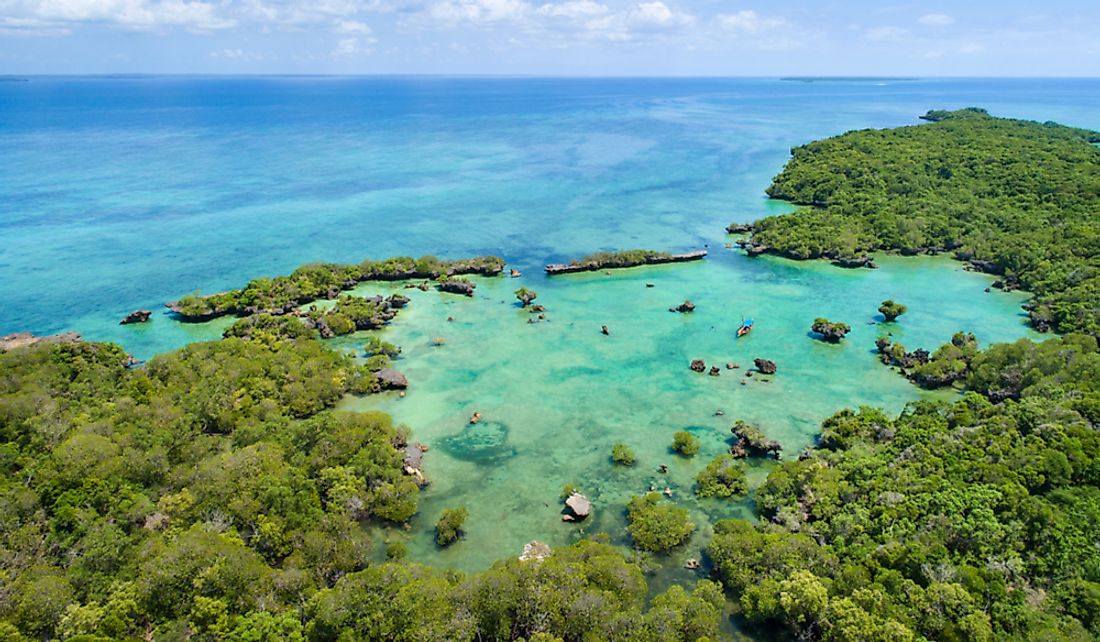What Are The Major Natural Resources Of Tanzania?

Tanzania is a Swahili-speaking nation in East Africa. Officially known as the United Republic of Tanzania, Tanzania borders Comoro Islands, Kenya, Rwanda, Uganda, Mozambique, Malawi, Burundi, and the Democratic Republic of Congo. Its capital city is Dodoma while the largest city is Dar-es-Salaam. The population of Tanzania is slightly above 55.5 million. The country is popular for its vast wilderness regions such as Serengeti National Park and Kilimanjaro National Park. Serengeti is inhabited by the famous Big Five animals which refer to the lion, rhino, elephant, buffalo, and elephant. On the other hand, Kilimanjaro National Park hosts Mount Kilimanjaro, the highest mountain in Africa. Aside from wildlife, the country boasts a wealth of natural resources including arable land, fish, forests, and minerals.
The Major Natural Resources of Tanzania
Arable Land
Agricultural land is a pillar of the economy of Tanzania. It contributes significantly to both local consumption and export earnings. Farming is based on small scale cultivation. However, large scale production exists for crops such as coffee, rice, wheat, tea, wattle, tobacco, and sisal. Other agricultural products include bananas, pyrethrum, beans, millet, cassava, cashew nuts, cloves, corn, and vegetables.
Coffee
Coffee is the most important cash crop in Tanzania and the country ranks among the world's top producers. Every year 30,000–40,000 metric tonnes of coffee are produced. The two main types of coffee are Arabica and Robusta. More Arabica coffee grows compared to Robusta which comprises of only 30% of the total coffee yield. The nine main Arabic coffee growing areas in Tanzania are Mbeya, Mbinga, Ngara, North Kilimanjaro, Iringa, Matengo Highlands, Morogoro, Usambara Mountains, and Kigoma. On the other hand, Robusta coffee typically grows in Bukoba in Kagera Region. 10% of the cash crop farming is done on plantations while the other 90% is on small-scale farming. The coffee industry in Tanzania engages a labor force of about 270,000 personnel.
Forests and Wildlife
Recently, the Tanzanian government put 6,425 acres of forest land under protection. The forest known as the Magombera Nature Reserve was under threat due to the incessant logging practices and conversion of habitat into sugar plantations. Tanzania boasts of not only diverse landscapes but also unique wildlife. Magombera Nature Reserve is home to more than five primate species including Udzungwa Red Colobus, Angolan Black and White Colobus, Sykes’s Monkey, Udzungwa Galago, and Greater Bushbaby. In collaboration with the local communities, Tanzania has set aside a Wildlife Management Area exclusively for wildlife habitation. More specifically the areas are Liwale, Burunge, Enduimet, Makao, and Makame among others. The famous Mara and Serengeti National Parks showcase the unique wildlife in Tanzania.
Minerals
Tanzania is among countries that have abundant mineral resources. Its minerals are categorized into metallic minerals, gemstones, industrial minerals, energy source minerals, and construction minerals. The metallic minerals found in Tanzania include silver, cobalt, iron ore, gold, graphite, copper, and nickel. A graphite mining operation has been in existence for 40 years at Merelani in Tanzania. At a mining rate of 15,000 tonnes per year, graphite mined is 97-98% pure. Gemstones include tanzanite, diamonds, pearl, garnets, ruby, rhodolite, sapphire, emerald, tourmaline, and amethyst among many others. Examples of industrial minerals extracted in Tanzania are gypsum, limestone, phosphates, soda ash, and salt. Energy source minerals include coal, natural gas, and uranium. Construction minerals include gravel, dimension stones, and sand. In spite of there being many mineral resources in Tanzania, gold and diamonds have been predominantly mined over the years.
Diamonds
The bulk of diamond production takes place at Mwadui area where commercial production commenced in 1925. Since then, Tanzania has become a significant producer of diamonds.
Gold
Gold exploration in Tanzania is concentrated within the greenstone belts found around Lake Victoria. In 2015, gold exports amounted to USD 1.3 billion of the total value of Tanzania’s exports which was 90% of the country’s mineral exports. The popular gold mines are Bulyanhulu, Buzwagi, Geita, North Mara, New Luika, and Golden Pride.
Fish
Tanzania’s fishing grounds are among the richest in the world. The lakes, rivers, and the Indian Ocean collectively have 1,700 fish species. Among these types of fish, 47 are used for commercial purposes, 69 are found in the deep sea, and 171 are threatened. In 2017, 360,000 tonnes of fish were caught. However, the demand for fish is quite high forcing the government to import more fish. Fishing takes place along the rich East African Coast at the Tanzanian coast. The most popular fishing areas are Pangani and Dar es Salaam. By engaging in deep-sea fishing, farmers catch large fish such as tuna, swordfish, biting barracudas, and marlin. The channel between Pemba and Zanzibar provides a world-class fishing expedition with depths of 820 meters. Deep sea fishing takes place off the coast of Rufiji Delta near Kilwa and covers the area extending to Lindi, Nyuni, Songo Songo, and Njovi Islands. Other fish caught in the Tanzanian waters are lobsters, crabs, tuna, squid, prawn, shark pups, tilapia, Nile perch, red snapper as well as dorado. Besides deep fishing, local fishermen also engage in fly fishing and inland fishing. Fly fishing occurs along large rivers and large streams while inland fishing takes place along Lake Victoria which is a freshwater lake. In the recent past, Tanzanians were not keen on fishing. However, it is fast becoming a popular alternative to dive trips and snorkeling at the coast. The waters are less populated and fishing is at its prime. In spite of the booming fishing in Tanzania, the species are threatened by overfishing, depleting stocks, and high prices in the market.











